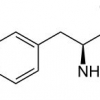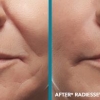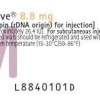HGH And Height
Children who are not growing at a normal rate might undergo leg lengthening surgery. There are a number of medical reasons why a child may not grow. These leg lengthening procedures involves a number of surgeries and a long recovery period. Research indicates a better option for these children to grow taller, may be found in HGH injections.
The child is put under anesthesia and the bone is then cut. Metal pins/screws are used with a metal device to get the desired length. It takes months for the legs to heal. The bone growth occurs at the end of each of the long bones. The growth plate is often destroyed during the surgical procedure, and complications are relatively common.
Are HGH Injections A Good Alternative to Leg Lengthening Surgery?
HGH injections are used by doctors for a number of reasons and are approved by the FDA for use in children with conditions that cause stunted growth. In fact, one of the often overlooked causes of stunted growth is the result of a deficiency of the human growth hormone. You can learn more about HGH here. The human growth hormone has many benefits, but we will focus on how HGH can benefit children who are dealing with stunted growth.
Testing for Growth Hormone Deficiency
When a child has a growth hormone deficiency it will generally show in a pattern of less than 2 inches of growth a year. Many of these children will have normal growth patterns until age 2 or 3, and then begin to show signs of delayed growth.
A parent who suspects growth failure of a child should be evaluated using a bone age x-ray whenever possible and blood samples to assess hormone levels. When other causes have been ruled out then the child’s growth hormone secretion can be stimulated using a number of different agents such as Ldopa, Arginine or clonidine. The release of growth hormone is then measured over a period of 8 to 12 hours since secretion is greatest during sleep.
Once the child is diagnosed with growth hormone deficiency or GHD treatment with HGH injections can begin under the supervision of the physician. Parents will be trained to administer the HGH injections.
The earlier the diagnosis the better the results. The treatment must occur prior to the bones fusing. While there are some claims that growth is still possible once the bones fuse, there is no research to back this claim. It is believed that once the bones fuse, no additional growth is possible.
How Does HGH Work In Children?
The human growth hormone has two cycles – the direct cycle and the indirect cycle.
- The direct cycle is the result of human growth hormones binding its receptors on target cells.
- During the indirect cycle, human growth hormone is mostly released in pulses that occur in the early phases of sleep.
The liver quickly converts HGH to its powerful growth promoting metabolite, Type 1 IGF-1 (Insulin like Growth Factor), which is also called Somatomedin C. IGF-1 is responsible for the majority of the beneficial effects associated with growth hormone. HGH is measured in the blood to determine the level of growth hormone secretion.
The treatment is continued until the child reaches a height that is acceptable. The HGH injections generally work quite quickly and growth is often seen in 3 to 4 months. Research shows that the HGH injections lead to an increase in appetite.
Research Studies Relating to HGH in the Treatment of Children
- Endocrinologist Maurice Raben injected HGH into a dwarf child. The child began to grow normally and over a 30-year period thousands of children were injected with cadaver derived HGH.
- In 1985, a research scientist by the name of Keith Kelley, M.D., demonstrated that HGH injections of cells that secrete high amounts of growth hormone could cause the shriveled thymus glands in old rats to grow until they became as large and healthy as those of young rats.
- In 1982, a study of 31 children with short stature was initiated. They received subcutaneous (sc) injections of HGH. In 29 of the 31 children a high growth response was seen. (Albertsson-Wikland 1986).
- Research showed that SC injections are very effective in growth hormone children (Kastrup, Christiansen, Andersen, Orskov 1983). 16 growth deficient children were given high injections daily for 2 a year period. Growth response increased during the first year. The absence of antibodies against HGH and local reactions at the injection site is proof of the safety of the treatment, which was also accepted extremely well by the children.
- The effect of growth hormone therapy in children with achondroplasia: growth pattern, hypothalamic-pituitary function, and genotype was studied. 42 children (16 males and 26 females, age 3-14 years) with achondroplasia were examined in this study. The study concluded that GH might be beneficial in the treatment of short stature in children with achondroplasia in the first 2 years of treatment.
- Another study, intranasal administration of the GHRP hexarelin accelerates growth in short children. (Volume 43, Issue 5, pages 631–635, November 1995) The focus of this study was to find out whether long term administration of this peptide would promote growth In short children. Intranasal hexareiin was administered in a dose of 60 pglkg thrice daily to 8 prepubertal short children aged 4-11-6 years for periods of up to months. The study concluded that the long-term GHIIGF-I stimulating, anabolic and growth promoting effects achieved by intranasal administration of this hexapeptide, seemingly without undesirable side-effects, suggests clinical potential for this new class of drugs.
Doctors, scientists, researchers, and others are coming together more often to present information on HGH injections for children. They want to let parents know the advantages as well as the disadvantages of HGH injections. According to Human Growth Hormone Guide, prescription HGH injections cost from $800 and up a month.
Try Growth Factor Plus To Grow Taller For 90 Days Risk Free!
References:
- Albertsson-Wikland K. (1986). Growth hormone treatment in short children. Acta Paediatr Scand Suppl. 325:64-70
- Kastrup KW, Christiansen JS, Andersen JK, Orskov H. (1983). Increased growth rate following transfer to daily sc administration from three weekly im injections of hGH in growth hormone deficient children. Acta Endocrinol (Copenh). 104(2):148-52
- Beaty H. Congenital anomalies of the lower extremity. In: Canale ST, Beaty JH, eds. Campbell’s Operative Orthopaedics. 11th ed. Philadelphia, Pa: Mosby Elsevier;2007:chap 26.
- Hosalkar HS, Gholve PA, Spiegel DA. Leg-length discrepancy. In: Kliegman RM, Behrman RE, Jenson HB, Stanton BF, eds. Nelson Textbook of Pediatrics. 18th ed. Philadelphia, Pa: Saunders Elsevier; 2007:chap 675.
- Updated by: Neil K. Kaneshiro, MD, MHA, Clinical Assistant Professor of Pediatrics, University of Washington School of Medicine. Also reviewed by David Zieve, MD, MHA, Medical Director, A.D.A.M., Inc.

















Can it be possible to have HGH injection be injected to the leg to make bone and legs grow some hints tall at the age of 29?
I am too short for my age and I am really worried about what people always say to me.
Thanks and waiting for your feeb back.
I want to be toller and i don’t know how?